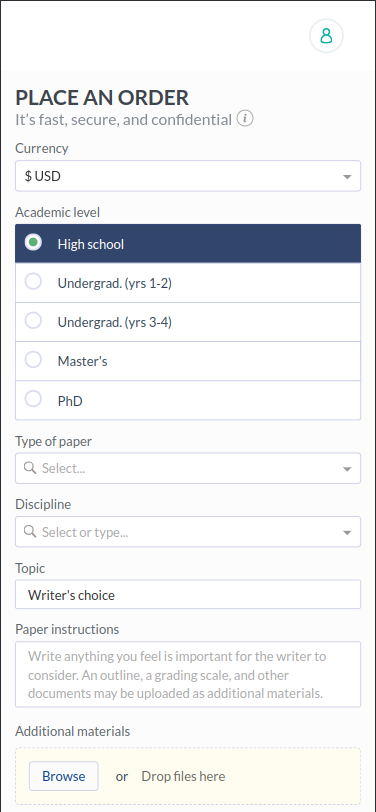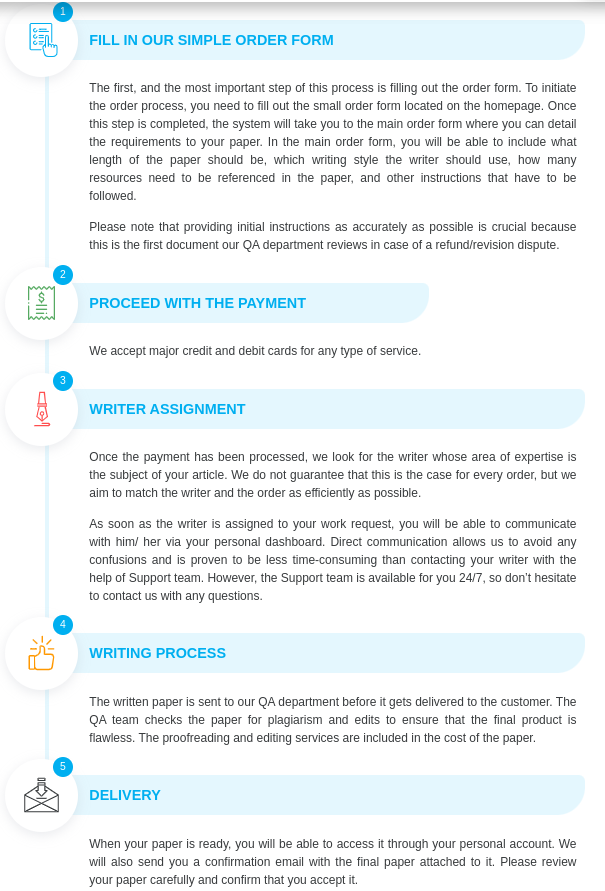NRNP 6550 Final Exam
Question 2The AGACNP is reviewing Tera’s CBC which indicates she has microcytic hypochromic anemia. You suspect an iron deficiency. You request a TIBC and a reticulocyte count. You anticipate that her TIBC will be ___________ and her reticulocyte count to be _________.
Question 3A 19-year-old male was struck by a truck while crossing the street. Blood pressure is 76/34 and heart rate is 122. You secure the airway and obtain a chest x-ray that suggests pulmonary contusions on the right and a FAST exam showing a black stripe between the liver and right kidney. What is the next best step?
|
Question 4
An unidentified patient is brought to the emergency department by ambulance after being hit by a motor vehicle. She has multiple injuries and an estimated blood loss of 2 liters. The hematocrit is 19%. The AGACNP expects that the mean cell volume (MCV) would most likely be:
70 fL | ||
80 fL | ||
90 fL | ||
110 fL |
Question 5
When examining a new patient in the hospital, the AGACNP finds impaired vibratory and position sense as well as spastic weakness. Upon questioning, he also reports paresthesia in his fingers and toes. When reviewing the laboratory data, the AGACNP finds a hemoglobin of 9. What is the most likely cause of this patient’s anemia?
Vitamin B12 deficiency | ||
Folate deficiency | ||
Iron deficiency | ||
Sickle cell disease |
Question 6
The AGACNP is assessing a new patient with a large variety of complaints. Which of the following symptoms would indicate the need for further workup for possible cancers?
Nagging cough, hoarseness, and unusual bleeding | ||
Skin rash and unusual bleeding | ||
Sore that will not heal along with a rash in close proximity | ||
An unusual lump, increase in the number of warts or moles |
Question 7
A 40 year-old man is status postcraniotomy for clipping of an aneurysm. His serum sodium is 115 mEq/L and he complains of nausea and vomiting. His urine sodium is 30 mEq/L and there is a decreased serum osmolality with inappropriately increased urine osmolality of 190 mOsm/kg. Initial treatment for this patient would include:
Starting intravenous fluids of hypertonic 3% saline | ||
Increasing water intake to 2 L/day | ||
Demeclocycline 300 mg bid | ||
Restricting fluid intake to 1200 mL/day |
Question 8
J.L. is an 81-year-old female who is admitted from home after her daughter found her confused and unkempt. The daughter states her mom was fine a week ago. .J.L.’s vital signs are as follows: Temperature 101.4o F, pulse 99 b.p.m., respirations 22 b.p.m., and blood pressure 90/58 mm Hg. Her urinalysis is shows +++ leukocytes, + RBC, and + nitrites. Her metabolic panel reveals a BUN of 39 mg/dL and creatinine of 1.5 mg/dL. The AGACNP knows that J.L has findings consistent with:
Pre-renal failure | ||
Intra-renal failure | ||
Post-renal failure | ||
Chronic renal failure |
Question 9
Acute tubular necrosis (ATN) is classified as which type of renal failure?
a. | Chronic | |
b. | Pre-renal | |
c. | Post-renal | |
d. | Intra-renal |
Question 10
The most common type of allogeneic transfusion reaction from packed red blood cells is:
allergic | ||
acute hemolytic | ||
delayed hemolytic | ||
transfusion-related acute lung injury | ||
febrile, nonhemolytic |
Question 11
Mrs. V, a 60 y/o woman status post small bowel resection is admitted to the Surgical Intensive Care Unit (SICU). She has a history of hypothyroidism and is lethargic. Her temperature is 94.6° F. Myxedema coma is suspected.
An appropriate intervention for Mrs. V would be:
Administer fluid challenges of Normal Saline to raise her blood pressure | ||
Administer 3% sodium chloride at 100 ml/hr to correct hyponatremia | ||
Administer IV thyroxine | ||
Order a Morphine sulfate at 2- 4 mg IVP every 15 minutes |
Question 12
The AGACNP is evaluating a patient for Hashimoto’s thyroiditis. The patient reports fatigue, cold sensitivity, joint stiffness and depression. Which of the following laboratory studies is almost always abnormally elevated in Hashimoto’s thyroiditis?
MCV | ||
T4 | ||
TSH | ||
ESR |
Question 13
Ms. Johnson has been on long term steroid therapy for her Multiple Sclerosis. She abruptly stopped taking it five days ago. The AGACNP suspects she is having an adrenal crisis. Her current blood sugar is 50. What is the BEST initial treatment for Ms. Johnson?
An infusion of D5 NS along with 50 mg of cortisol | ||
1 g solumedrol IV | ||
An epinephrine infusion | ||
An infusion of dobutamine |
Question 14
A general principle in surgical oncology is that the best approach to curative surgery in a fixed tumor requires:
En bloc resection | ||
Adjuvant therapies | ||
Neoadjuvant therapies | ||
Elective lymph node dissection |
Question 15
You see a 28-year-old woman who is taking ferrous sulfate for treatment of iron deficiency anemia. She complains of gastric upset after taking the medication on an empty stomach. While some options are not ideal, which of the following would you NOT recommend to help resolve this problem?
Decrease the dose by 50% | ||
Increasing fluid intake | ||
Increasing fiber intake | ||
Taking the full iron dose with meals three times a day |
Question 16
The AGACNP suspects that her patient has adrenal insufficiency. What lab findings would you expect to find in this patient?
High serum sodium, low serum potassium, elevated plasma ACTH, and low plasma cortisol level | ||
Low serum sodium, high serum potassium, elevated plasma ACTH, and low plasma cortisol level | ||
Elevated BUN, low serum sodium, and high serum potassium | ||
Low BUN, low serum sodium, and high serum potassium |
Question 17
The AGACNP is planning treatment for a 42 year old male undergoing chemotherapy for lung cancer. How many days after chemotherapy is started will the patient have the highest risk of infection due to a decrease in WBCs?
3-5 days | ||
5-7 days | ||
7-14 days | ||
21-28 days |
Question 18
A 22-year-old male presents to the Emergency Department after being stabbed multiple times in the chest and abdomen. He is hemodynamically stable. During the primary survey, special attention must be given to which of the following
Obtain a detailed history and physical | ||
Assess pelvis for stability to compression | ||
Expose and roll the patient to identify additional wounds | ||
Draw CBC, CMP, and PT/INR |
Question 19
Pernicious anemia results in which of the following RBC indices?
Microcytic, normochromic | ||
Normocytic, normochromic | ||
Microcytic, hypochromic | ||
Macrocytic, normochromic |
Question 20
A trauma patient was resuscitated 3 days ago with 7 liters of crystalloid.The AGACNP is reviewing his morning labs and notices that he has a serum Na of 128. Which of the following orders reflect the most appropriate treatment the AGACNP can institute?
a. | Hypotonic saline | |
b. | Dextrose solution | |
c. | Discontinue diuretics | |
d. | Restrict free water |
Question 21
B12 deficiency anemia results in which of the following RBC indices? | |
Microcytic, normochromic | ||
Normocytic, normochromic | ||
Microcytic, hypochromic | ||
Macrocytic, normochromic |
Question 22
Mr. Mireya is a 66-year-old male who is admitted for elective surgery with a history of stage iV chronic kidney disease. The AGACNP should carefully assess his preoperative labs for:
Anemia | ||
Hypercalcemia | ||
Eosinophilia | ||
Hypokalemia |
Question 23
The AGACNP is examining a patient with generalized muscle weakness and suspects hypothyroidism. Which exam finding would support the diagnosis of hypothyroidism?
Silky fine hair | ||
prolonged recovery of the achilles deep tendon reflex | ||
exopthalmous | ||
hyperactive deep tendon reflexes throughout |
Question 24
Patients in advanced stages of chronic kidney disease are at greatest risk for which of the following conditions?
Anemia | ||
Polycythemia | ||
Hypokalemia | ||
Metabolic alkalosis |
Question 25
Patients with diabetes insipidus will have significant volume loss, but it is usually a self-limiting condition. Many patients are successfully treated with fluid support. For those who need the next level of care, which is the indicated agent?
Norepinephrine | ||
Dopamine | ||
Vasopressin | ||
Relcovaptan |
Question 26
Most common cause(s) of megloblastic, macrocytic anemia is/are:
Folate and/or Vitamin B12 deficiency | ||
Chronic disease | ||
Iron deficiency and infection | ||
Hemolysis of blood cells |
Question 27
Pernicious anemia is usually caused by:
Dietary deficiency of vitamin B12 | ||
Lack of production of intrinsic factor by the gastric mucosa decreasing absorption by the gut | ||
Red blood cell enzyme deficiency | ||
A combination of micronutrient deficiencies due to malabsorption | ||
A and B |
Question 28
Patients with sickle cell disease may be prone to severe infections because:
Sickle cell disease damages the spleen | ||
Sickle cell disease inactivates white blood cells | ||
Sickle cell disease alters the immune response to bacteria | ||
Sickle cell disease sequesters antibiotics preventing them from reaching the site of the infection |
Question 29
One month into therapy for pernicious anemia, the AGACNP wants to assess the efficacy of the treatment. The BEST lab test to order at this point is a:
Schilling test | ||
hematacrit measurement | ||
reticulocyte count | ||
serum ferritin |
Question 30
In which of the following clients would you suspect vitamin B12 deficiency?
Female that presents with a beefy, red, smooth tongue | ||
Female that presents with a one week history of pallor, fatigue, and anorexia | ||
Male that presents with history of black, tarry stools | ||
Female with a history of heavy menstral flow |
Question 31
A patient is seen in follow-up 12 weeks after being started on levothyroxine, 75 mcg daily. Today the patient reports feeling well and offers no complaints. Vital signs are normal. Serum TSH is 4.7 mIU/L. The next step in the management of this patient is to:
Tell the patient she is doing well and should continue her current medication with a follow-up in 12 weeks | ||
Review with the patient her routine for taking her medication | ||
Increase the dose to 100 mcg/daily | ||
Order FT3 ad FT4 studies |
Question 33
A patient with SIADH would be expect to demonstrate which pattern of laboratory abnormalities?
Serum Na+ 119 mEq/L, serum osmolality 240 mEq/L, urine Na+ of 28 mEq/L, urine osmolality of 900 mOsm/kg | ||
Serum Na+ 152 mEq/L, serum osmolality 315 mEq/L, urine Na+ of 5 mEq/L, urine osmolality of 300 mOsm/kg | ||
Serum Na+ 121 mEq/L, serum osmolality 290 mEq/L, urine Na+ of 7 mEq/L, urine osmolality of 850 mOsm/kg | ||
Serum Na+ 158 mEq/L, serum osmolality 251 mEq/L, urine Na+ of 20 mEq/L, urine osmolality of 420 mOsm/kg |
Question 34
Which of the following is not part of the primary survey?
Check breathing | ||
Head to toe evaluation | ||
Check level of consciousness | ||
Assess airway |
Question 35
C.L. is a 48-year-old female who presents complaining of activity intolerance. She normally jogs 4 miles a day but now states that she is tired just going up and down the stairs. She is having a lot of bleeding with her periods, and her periods seem to be more frequent. A complete blood count (CBC) reveals the following results:
Hgb 10.1 g/dL
Hct 30%
MCV 75 fL
RDW 21%
The AGACNP orders which of the following laboratory test to confirm the suspected diagnosis?
Vitamin B12 | ||
Folate | ||
Ferritin | ||
Hemoglobin electrophoresis |
Question 36
Ms D. is a 34 y/o female who is complaining of increased irritability, weight loss despite eating, and diarrhea. She always feels exhausted, but can’t seem to sleep. She states she “feels like she could jump out of her skin”. If excess thyroid hormone is the cause of her symptoms, which of the following might be noted?
Fine tremor | ||
Delayed tendon reflexes | ||
Sinus bradycardia | ||
Jaundice |
Question 37
The primary advantage of targeted molecular therapies for cancer, such as monoclonal antibodies (e.g., trastuzumab, cetuximab), is that they:
Are expressed in cancer cells but not in vital organs and tissues | ||
Have measurably less toxicity and clinical adverse effect | ||
Cost significantly less than nontargeted chemotherapies | ||
Require a much shorter treatment time |
Question 38
Management of patients in Addisonian crisis must center upon which of the following?
Large volume isotonic fluids | ||
Temperature and blood pressure support | ||
Broad spectrum antibiotics | ||
Intravenous glucocorticoids |
Question 39
Mrs. Knickerson is a 77-year-old female admitted for management of urinary tract infection. Her complete blood count reveals a white blood cell differential as follows: Total leukocyte count 57,000 cells/uL, neutrophils of 16%, lymphocytes 77%, monocytes 3%, eosinophils 3% basophils 1%. The AGACNP is suspicious for:
Urosepsis | ||
Immunosuppression | ||
Drug-induced leukocytosi | ||
Chronic lymphocytic leukemia |
Question 41
Which of the following infectious organisms is not routinely tested for on donor blood collected for transfusion:
HIV | ||
Hepatitis C | ||
Hepatitis A | ||
Syphilis |
Question 43
Sally is a type 2 diabetic scheduled for a total knee replacement. How should the AGACNP manage Sally’s diabetic medications?
Continue the current treatment regime as long as the preoperative HgA1C is less than 7 | ||
Discontinue all oral diabetic medication the day of surgery | ||
Start an insulin drip in the preoperative area and titrate to maintain a blood glucose of 96-120 | ||
Administer a basal dose of Lantus in the preoperative area to ensure a steady glucose level through the next 24 hours. |
Question 44
A 19-year-old woman presents to your office with a 3-day history of dysuria and foul-smelling urine. She also notes some suprapubic pressure and noted some chills and she thinks she had a fever yesterday. She reports no vaginal bleeding or discharge and reports no nausea or vomiting. She denies any significant past medical history. On exam she has a temperature of 38°C, a pulse of 105/min and a blood pressure of 120/75mmHg. Her abdominal exam reveals some suprapubic tenderness. Her back exam reveals no costovertebral angle tenderness. Urine dip demonstrates 2+ leukocytes. What should be done next?
a. | Admit the patient for empiric intravenous antibiotic therapy | |
b. | Start empiric oral antibiotic therapy | |
c. | Admit the patient for intravenous hydration therapy | |
d. | Check a urine culture and await results | |
e. | Check a CT of her abdomen/pelvis |
Question 45
Your patient has diabetes insipidus (DI). Anticipated physical assessment findings include:
Dry skin, tachycardia, hypertension | ||
Weak pulse, dry skin, decreased skin turgor | ||
Thin hair, thready pulse, dry mucous membranes | ||
Hypothermia, jugular venous distention, bradycardia |
Question 46
Brian, an 18 year with an intracerebral hematoma from a Motor Vehicle Crash (MVC) has SIADH. The AGACNP knows that this is caused by:
Low levels of ADH | ||
High levels of ADH | ||
Anterior pituitary damage | ||
Adrenal damage |
Question 47
A 68 year old man presents with a complaint of shortness of breath upon exertion. Physical exam reveals conjunctive pallor. Hg 7.5, MCV 81, MCHC 36%, Ferritin level 210. The most like clinical problem is:
poor nutrition | ||
occult blood loss | ||
malabsorption | ||
hemolysis |
Question 50
The AGACNP is called to admit a patient with presumed myxedema coma. Expected physical examination findings include:
All vital signs well below lower limits of normal | ||
Extreme volume contraction | ||
Diffuse hyperpigmentation | ||
Loss of SQ fat and generalized wasting |
Differential diagnosis of hematuria include all of the following except:
Bladder cancer | ||
Prerenal azotemia | ||
Urinary tract infection | ||
Nephrolithiasis in the renal parenchyma |
Question 52
A 48 year old woman developed iron deficiency anemia due to gastrointestinal bleeding. Her hematocrit level is 25% and she is taking 325 mg of ferrus sulfate three times a day. At 5 days into therapy, you expect to find:
completely corrected MCV | ||
a normal hematocrit level | ||
normal ferritin level | ||
brisk reticulocytosis |
Question 53
J.Q. is a 45-year-old male who had gastric bypass surgery 18 months ago. A CBC reveals a macrocytic anemia with a Hgb of 9.8 g/dL, HCT of 30%, MCV of 115 and RDW of 19%. The AGACNP suspects which type of anemia?
Iron deficiency | ||
Sickle cell anemia | ||
Pernicious anemia | ||
Anemia of chronic disease |
Question 54
The AGACNP knows that when evaluating a patient with suspected acute pyelonephritis, which of the following is not a common feature?
Pyuria | ||
Fever | ||
CVA tenderness | ||
Gross hematuria |
Question 55
Which of the following statements about anemia due to folate deficiency is incorrect?
MCV is elevated | ||
Alcoholics are at increased risk | ||
Associated neurological symptoms such as peripheral neuropathy are common | ||
CBC picture can be similar to that seen in Vitamin B12 deficiency |
Question 56
Mr. Hogle is a 65-year-old male patient who presents with a burning-type discomfort in the epigastrum. He notices it most at night, but says that sometimes he appreciates it when he is really hungry. It actually seems to get better when he eats. His vital signs are all within normal limits. A stool for occult blood is negative. His CBC reveals an Hgb of 10.1 g/dL and hematocrit of 30%. The MCV is 74 fL. The AGACNP knows that the next appropriate step is to order:
Ferritin and TIBC studies | ||
Vitamin B12 and folate | ||
Helicobacter pylori testing | ||
A consult with gastroenterology |
Question 58
A 26-year-old male presents to the trauma bay after being involved in a high-speed motorcycle collision. You note that he is obtunded and has bilateral open lower extremity fractures with exposed bone and muscle. What is the first priority when first assessing this patient?
Place tourniquets on both lower extremities to control bleeding. | ||
Place two large bore peripheral IV lines. | ||
Assess the airway and, if necessary, perform endotracheal intubation | ||
Send the patient to the CT scanner to look for intracranial injury |
Our team of expert nursing writers at Nursing Assignment Service can help you with your NRNP 6550 Final Exam, place your order here.
Question 59
J.S. is a African-American female who presents for a wellness examination. Her medical history is significant for beta thalassemia minor. Anticipated red blood cell differential would include which of the following patterns?
Hgb 10.2 g/dL, Hct 30%, MCV 70 fL, RDW 12.6% | ||
Hgb 9.9 g/dL, Hct 28%, MCV 83 fL, RDW 13.9% | ||
Hgb 11.5 g/dL, Hct 35%, MCV 94 fL, RDW 15.8% | ||
Hgb 12.8 g/dL, Hct 38%, MCV 105 fL, RDW 18.1% |
Question 60
J.H. is a 71-year-old male with small cell lung cancer. On exam today he is quite edematous and has gained 12 lbs since his office visit one week ago. A metabolic panel reveals a serum Na+ of 119 mEq/dL. His urine output is plus 2 lites over his intake. The AGACNP knows that J.H. likely has:
Brain metastasis | ||
Syndrome of inappropriate antidiuretic hormone | ||
Congestive heart failure | ||
Metabolic alkalosis |




